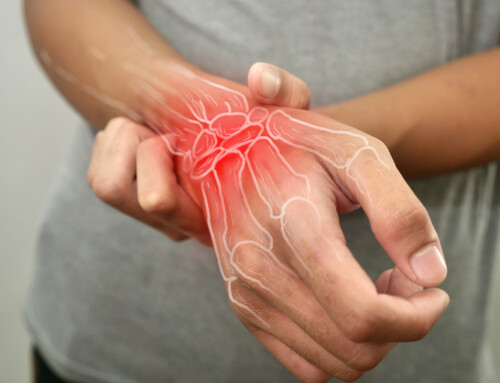Case Study: Lumbar Radiculopathy Back & Leg Pain
Patient History
This patient is a 38 year old female who presents to physical therapy with lower back pain and left leg pain which began suddenly when she bent over to pick up a heavy box. The patient reports pain is worse when sitting which is impacting her ability to work a full shift as a receptionist. The patient also reports pain is slightly better when she is standing but her leg feels the best when she is walking. However, she reports her leg sometimes feels weak like it might “give out” which is making her hesitant to walk and exercise. She would like to return to working full time without pain.
Evaluation
At the patient’s first visit a complete evaluation was completed to determine the cause of her pain and the most effective treatment plan. Some items assessed include:
- Posture: She was leaning to her right with a slouched-over posture
- Range of motion: Patient had decreased flexibility bending forward, bending backwards, and side bending to the left
- Symptom changes: Her pain increased when bending forward and decreased when side bending to the left
- Neurological testing: Patient’s reflexes and sensation were impaired and she had a positive straight leg raise test.
- Biomechanics: When the patient was asked to demonstrate “good” lifting mechanics she forward bent through her lumbar spine with minimal knee or hip movement
- Diagnosis: Due to multiple positive neurological tests this patient was diagnosed with a lumbar radiculopathy likely due to a disc herniation.
Initial treatment was to focus on centralizing or decreasing the patient’s leg pain through repeated lumbar motions and optimally loading her spine. She was also instructed to avoid positions which increased her leg pain. For example, she had pain when bending forward to tie her shoes so the patient was taught how to tie her shoes in a high kneeling position. She was also able to immediately increased her sitting tolerance by using a lumbar roll.
Once the patient’s pain was resolved, the treatment focus shifted to increasing core strength and improving her lifting mechanics to prevent future injury. She was given a comprehensive plan to gradually return to her favorite gym activities and we were able to replicate difficult household tasks that she was nervous about trying. The patient was discharged as soon as she could complete all the tasks she loved without any pain.
Outcomes
After 5 weeks of treatment the patient reported full resolution of pain, return of leg strength, and she was able to return to work full-time. She returned to the gym and was given a strengthening program so that she could continue to see improvements even after finishing her physical therapy course.
Final Thoughts
Receiving a diagnosis of a disc herniation, nerve root compression, or radiculopathy can be really scary.
The good news is that most of the time these conditions can heal with the perfect balance of exercise, manual therapy, and the appropriate amount of rest. As physical therapists, it is our job to help patients navigate this balance to help your body heal itself. We will ensure that you are prepared to return to your favorite activities without injuring yourself again.
For more information on this case study for treatment of Lumbar Radiculopathy back and leg pain, our treatment and techniques, physical therapy for management of running pain, or to make an appointment for an evaluation or treatment, contact us at one of our two physical therapy clinics in






